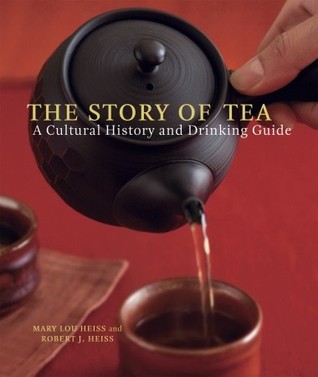Continuing on my quest to read as many tea books as possible, I found The Story of Tea at the library! Written by two tea traders, The Story of Tea claims to be a “cultural history and drinking guide.”
The first chapter is called “A Brief History of Tea”, though it’s pretty comprehensive to me. I enjoyed the fact that it focused only on tea-producing countries, which meant the main focus was on Asia, specifically China and Japan. Of all the books I’ve read, this probably had the most in-depth account of the history of tea in China (then again, I haven’t read a book that is dedicated to Chinese tea history). The section on Japanese tea history was pretty short, and I think Making Tea, Making Japan has a more comprehensive account of the history. And if you’re looking for something that looks at the relationship between England and her tea producing colonies, the book A Thirst for Empire will provide you with more information.
The second chapter focused specifically on the tea bush and a few tea producing countries. There is a brief mention of the Java bush (camellia sinensis var. cambodi), but unfortunately the book doesn’t go into detail about it. I did find the chart about when the tea could be harvested interesting, because it shows which countries can produce tea year-round and which can’t. It turns out that climate plays a pretty big role in this.
The third chapter is the second longest in the book and talks about the type of tea. I thought their distinction between the types of white tea to be very helpful – they divided white tea into the traditional budset white tea, which uses only buds, and the new-style leaf white tea, which uses the first leaves to make the white tea. That said, they also divided the budset white tea by terroir (whether it’s from a place that traditionally produces white tea or not), which I found a bit too restrictive for my taste.
Quite sadly, the book only talks about puer when they discuss dark tea, which is a pity given that there are also excellent dark teas that are not puer. In this respect, The Art and Craft of Tea’s discussion of the types of tea is better.
Chapter four is called “journeying along the tea trail” and it goes into detail about the different types of tea found in different places. It’s very much like a tea-focused travelogue and I enjoyed this section very much. It even covered places like Korea, Georgia, and Nepal and gave some information about their tea history along with the types of tea they produce.
The fifth chapter is their ‘encyclopedia of tea’, which they admit isn’t comprehensive. Instead, they choose teas that they feel are representative of a particular tea category. While I did find a few teas that were new to me, most of them will be familiar to a tea enthusiast. But the part that I found unhelpful were the colours – everything seemed washed out. It’s a pity, given that the colour of the tea leaves can be different even within a subcategory and that is part of its charm.
The next chapter is on tea brewing and covers buying and storing tea. It’s not bad, but there aren’t any illustrations and might not be very helpful to a beginner.
The seventh chapter is on tea customs and cultures and is one of the most interesting parts of the book. To be honest, I would have liked this to be with (or perhaps integrated into) the chapter on the history of tea and the tea trails because I feel that tea history, culture, and terroir are all pretty closely intertwined and it would be rewarding to look at it holistically.
Chapter eight is on the health benefits of tea, and I appreciated they included scientific studies. The discussion on caffeine was pretty interesting too.
The second last chapter, chapter nine, is on ‘ethics in tea trade’. Sadly, this chapter misses the opportunity to explore unfair tea practices in places such as India or Malawi, or how tea farms in non-recognised parts of China are struggling (if you’re interested, this blog post from teapasar talks about unfair tea practices and has a bibliography you can use as a starting point for more research). Instead, most of the chapter is spent talking about certifying bodies and the column about tea estate workers issues says that “only today, with the return of privatization and national pride, tea estates operate with the ethical awareness of the importance of workers’ lives and welfare as well as the interdependent contribution that each makes to the common good of each other.” Considering that there are reports of poor working conditions from places like the BBC as recently as 2016, I find that quote a bit hard to swallow. There are good tea estates, but they aren’t quite the norm yet.
The last chapter is on cooking with tea and has a variety of recipes. I haven’t tried any of those, since my interest is more in the history and cultural parts.
Overall, this is a pretty good introduction to tea. While there are some things I disagree with (such as their coverage of ethics and them leaving out the rest of the dark teas), I think that it’s got a lot of good information and stories about teas that will appeal to most tea lovers.
